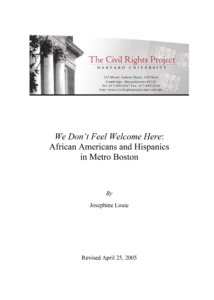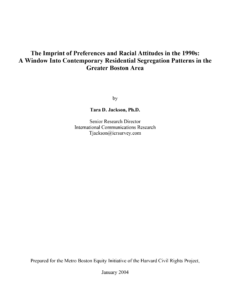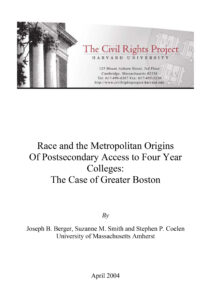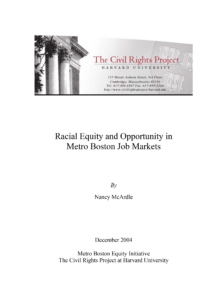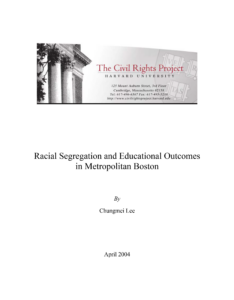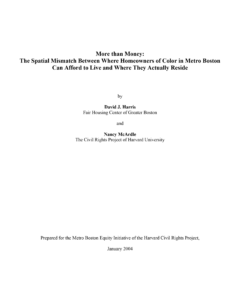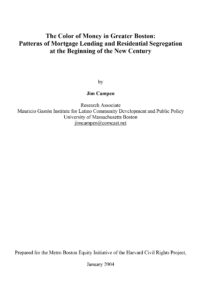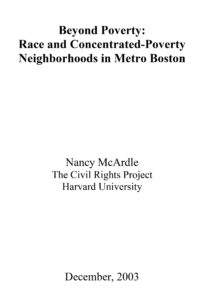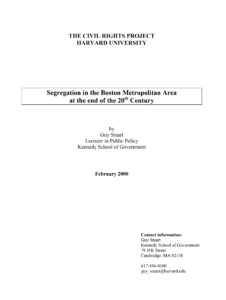Executive Summary
The inequities of residential segregation and their impact on educational opportunity are a national problem, but greater metropolitan Boston has a particularly problematic history in terms of the extent to which racial segregation has deeply divided the city into separate and unequal systems of opportunity. Despite decades of policy efforts to desegregate Boston, racial segregation has persistently dominated residential patterns in the Boston metropolitan area (McArdle, 2003), and, because it is so linked to inequality of schools and communities, minority children tend to be particularly disadvantaged by the persistence of this form of social stratification (Logan et al., 2003).
Given existing research that has already established inequities in K-12 education, the purpose of this study is to examine the potential impact of geographic origin within the Boston metropolitan area on postsecondary access-oriented outcomes such as SAT scores and number and types of applications to postsecondary institutions. More directly, this study provides a descriptive picture of how students from different types of geographic environments in the greater Boston metropolitan area and of different racial and ethnic backgrounds experience opportunities for postsecondary educational access. We find that pathways to college are strongly related to residential segregation even after other factors such as income are taken into account.
The sample for this study comes from 29,742 postsecondary student applicants who come from the greater Boston metropolitan area and who took the SAT between 1996 and 1999. Each of the access outcomes (SAT scores and number and types of applications to postsecondary institutions) described above will be examined vis-à-vis their relationship to students’ race/ethnicity and their geographic origin type within the greater Boston metropolitan area. A combination of descriptive summaries, including cross-tabulations, t-tests, and multiple regression are used for data analysis. Racial/ethnic categories include African/American, Hispanic/Latino (used as a separate category from the other racial categories), Native American, Asian American and White.
Geographic origin categories include urban Boston, other urban (other cities with high population densities), and suburban regions. The City of Boston itself is the major urban center for the region and is therefore identified as its own type of residential region. The other urban areas are identified as cities that have high population densities, that are also quite urbanized and share common problems of high poverty, scarce resources and are inhabited by high percentages of individuals from racial and ethnic groups that have traditionally been under-served by formal education systems. The remaining suburban communities are wealthier and more predominantly white than either of the urbanized regions.
In compliance with the UC Open Access Policy, this report has been made available on eScholarship:

